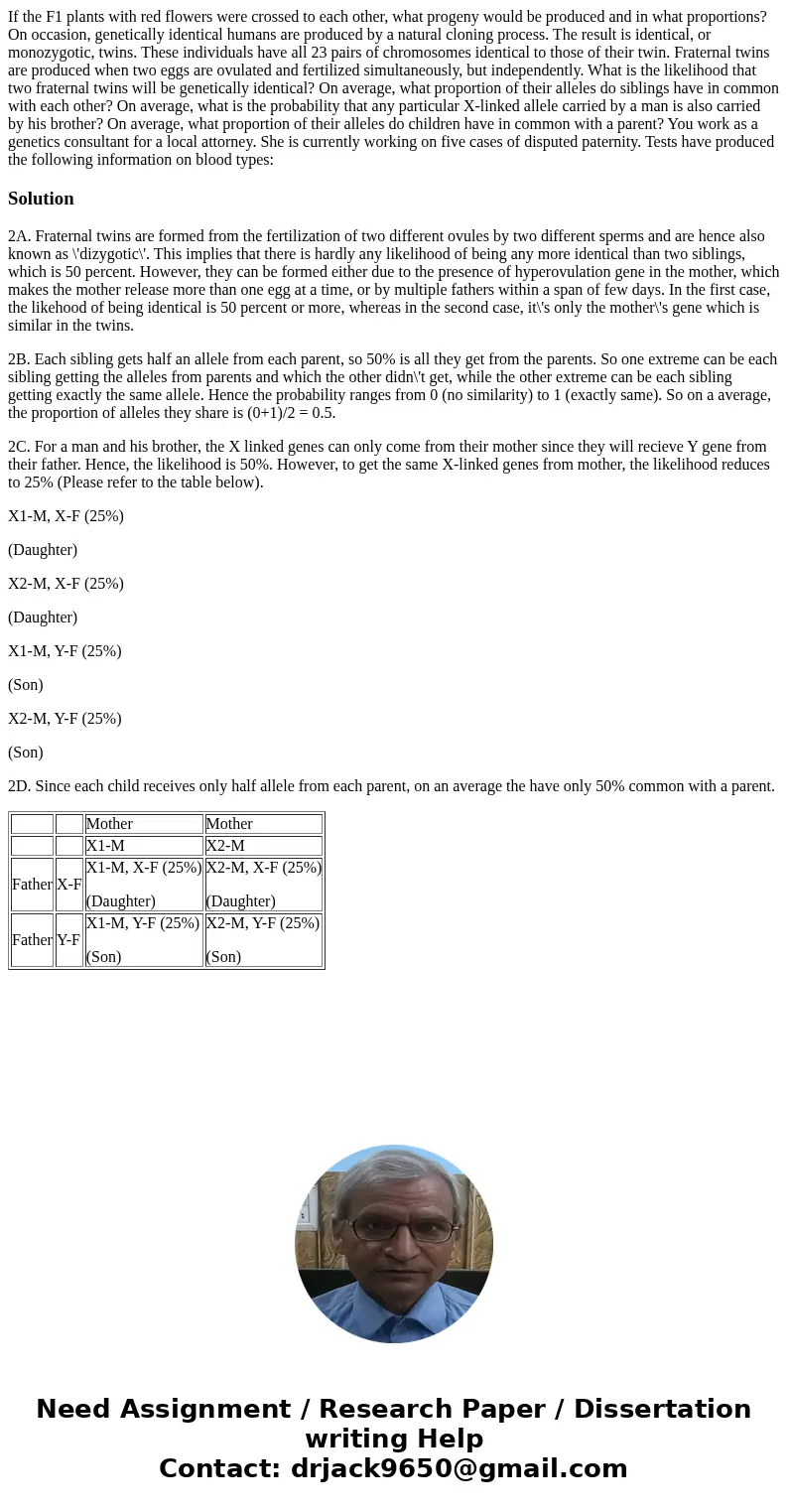If the F1 plants with red flowers were crossed to each other
Solution
2A. Fraternal twins are formed from the fertilization of two different ovules by two different sperms and are hence also known as \'dizygotic\'. This implies that there is hardly any likelihood of being any more identical than two siblings, which is 50 percent. However, they can be formed either due to the presence of hyperovulation gene in the mother, which makes the mother release more than one egg at a time, or by multiple fathers within a span of few days. In the first case, the likehood of being identical is 50 percent or more, whereas in the second case, it\'s only the mother\'s gene which is similar in the twins.
2B. Each sibling gets half an allele from each parent, so 50% is all they get from the parents. So one extreme can be each sibling getting the alleles from parents and which the other didn\'t get, while the other extreme can be each sibling getting exactly the same allele. Hence the probability ranges from 0 (no similarity) to 1 (exactly same). So on a average, the proportion of alleles they share is (0+1)/2 = 0.5.
2C. For a man and his brother, the X linked genes can only come from their mother since they will recieve Y gene from their father. Hence, the likelihood is 50%. However, to get the same X-linked genes from mother, the likelihood reduces to 25% (Please refer to the table below).
X1-M, X-F (25%)
(Daughter)
X2-M, X-F (25%)
(Daughter)
X1-M, Y-F (25%)
(Son)
X2-M, Y-F (25%)
(Son)
2D. Since each child receives only half allele from each parent, on an average the have only 50% common with a parent.
| Mother | Mother | ||
| X1-M | X2-M | ||
| Father | X-F | X1-M, X-F (25%) (Daughter) | X2-M, X-F (25%) (Daughter) |
| Father | Y-F | X1-M, Y-F (25%) (Son) | X2-M, Y-F (25%) (Son) |

 Homework Sourse
Homework Sourse